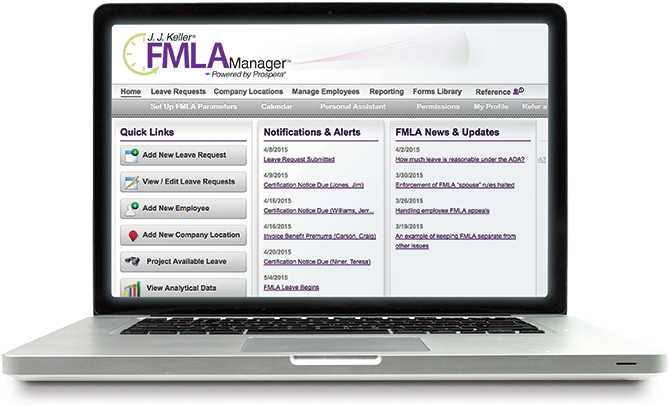FMLA Articles
What would you think about a federal paid leave mandate?
Key to remember: The U.S. DOL is looking into the possibility of paid leave through a request for information and is looking for input.
Applies to: Employers.
Impact to customers: Were the federal government mandate paid leave, employers would need to comply, making employee leave administration more challenging.
Possible impact to JJK products/services: For now, this is a news item.
If the paid leave under the Families First Coronavirus Response Act wasn’t enough to test the mettle of leave administrators, on July 15, 2020, the U.S. Department of Labor’s Women’s Bureau announced a request for information on the impact of paid family and medical leave on employees and employers.
For employees, the Women’s Bureau is requesting public comments concerning the effectiveness of current state- and employer-provided paid leave programs, and how access or lack of access to paid leave programs has affected women and their families.
The agency wants the information to help identify practices related to eligibility requirements, related costs, and administrative models of existing paid leave programs.
As a member of the public, you are being offered a chance to provide input on considerations for paid leave for following reasons:
- The birth of a child and need to care for the newborn child within one year following the birth;
- The placement, with the employee, of a child for adoption or foster care and to care for the newly placed child within one year following placement;
- To care for the employee’s spouse, child, or parent who has a serious health condition; or
- A serious health condition that makes the employee unable to perform the essential functions of his or her job.
These should look familiar, as they track with the non-military family leave provisions of the regular Family and Medical Leave Act (FMLA).
If you would like to provide input, the Women’s Bureau encourages you to refer to the following:
- Types of leave or a qualifying circumstance;
- Source citations; and
- The number of employees in your organization/business.
You may submit comments through September 14, 2020 online at www.regulations.gov (RIN 1290-ZA03) or by mail to Joan Harrigan-Farrelly, Deputy Director, Room S-3002, U.S. Department of Labor, 200 Constitution Ave NW, Washington, DC 20210.
In case you’re wondering, the Women’s Bureau’s mission is to “formulate standards and policies that shall promote the welfare of wage-earning women, improve their working conditions, increase their efficiency and advance their opportunities for profitable employment.”
In the past, The Women’s Bureau’s mission is to formulate standards and policies that shall promote the welfare of wage-earning women, improve their working conditions, increase their efficiency and advance their opportunities for profitable employment.
Historically, a federal paid leave law has not made it too close to the finish line. Many employers oppose a mandate and feel that employee leave should be tailored to the particular organization. While the current administration has been somewhat employer-friendly, remember that in late 2019, as part of the 2020 National Defense Authorization Act, a new paid parental leave provision became law for federal employees. As of October 1, 2020, those eligible federal employees are entitled to 12 weeks of paid parental leave for the birth, adoption, or fostering of a child.
In addition, the federal 2021 Budget includes “a proposal to provide at least six weeks of paid family leave to new mothers and fathers, including adoptive parents, so all families can afford to take time to recover from childbirth and bond with a new child.”
Stay tuned!
This article was written by Darlene M. Clabault, SHRM-CP, PHR, CLMS, of J. J. Keller & Associates, Inc. The content of these news items, in whole or in part, MAY NOT be copied into any other uses without consulting the originator of the content.
You may also enjoy the following articles:

The J. J. Keller FMLA Manager service is your business resource for tracking employee leave and ensuring compliance with the latest Federal and State FMLA requirements.